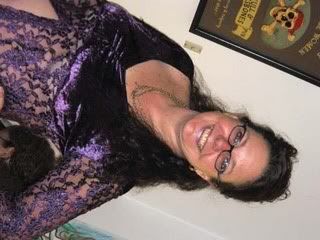So when did going out for dinner become an act of nonviolent solidarity? Well, when enough people decide to do something creative and collectively in order to make a stand against violence.
Mia Northrop, a 35 year old, web designer from inner Melbourne had an idea whilst having dinner with her husband at her local Indian Curry house. Like many Melbournians, they were concerned about the high-level of racially motivated assaults, stabbings and even murders of Indian and Pakistani taxi drivers, students and night workers in the community, including a fatal stabbing of a 21-year-old Indian graduate, Nitin Garg in January this year. The violence is not all hate-motivated, but a lot of it has been and any violence at all has been becoming increasingly intolerable. Southasian students in Australia have told journalists how racist slurs and aggressive behaviour have often made them feel threatened in public spaces. Gautam Gupta, from the Federation of Indian Students of Australia (FISA), says that “Bloody Indian, go back home” is a commonly used insult during many of the attacks. There has been street protests, marches and vigils and increasing international media and diplomatic attention to the issue.
The idea that came to Mia and her husband was to put a callout for people to have dinner at any local Indian restaurant on the same night – February 24th, 2010. “Imagine if on one night thousands of people did this kind of decentralised flash mob and all turned up to Indian restaurants as a way of embracing the Indian community and showing solidarity’?”
Mia set up a website, a Facebook page and a Twitter account. She’s been ”absolutely overwhelmed” by the response. Over 10,000 people have ‘registered’ at the action’s website to hold or go out to dinner on the night. Restaurants across Melbourne are already booked out and many schools and companies have registered it as an event. The blogosphere, particularly the vast online culinary/foodie networks, have been spamming the idea along with Curry recipes.
Some rare critiques have labeled it a silly idea, “Self-indulgent shit that will only exploit already underpaid workers so white people can feel good about themselves” one blogger states. It’s certainly not going to stop any violence. So why do it?
“I’m under no illusion that this is going to solve racism or or stop attacks,” Mia has said, adding “It’s a small gesture, but when it’s made by thousands of people simultaneously, I think it sends a really powerful message.”
“It’s really not about the food. A night out at Indian restaurants is just a vehicle to tap the silent majority to put it across that they are against such attacks” Ms. Northrop told the Hindu newspaper.
There are many ways in which communities can respond to racism and to direct violence. Often, police and authorities prefer communities under threat to remain invisible and present a smaller target. Police in Melbourne have called upon Indian students to ‘dress poorer’ and try not to travel at night. Debate in the mainstream media has often focused upon the strained ties with India and the impact upon Australia’s foreign student market. The message is that victims are partially to blame and we must leave it to the police to solve.
However, communities often utilize a range of nonviolent tactics to highlight the violence, mobilise support and reduce the fear associated with hate-motivated violence. Community education campaigns, speak-outs, public meetings, marches and vigils. In Melbourne last year, Indian community members gathered at suburban train stations to meet and escort young students and workers home from late night shifts and study. Taxi drivers have twice occupied a major intersection of the city over night after the deaths of Indian taxi drivers. After the murder of Nitin Garg, friends, community members and even local residents formed a candlelit procession along his final walk to the place where he was stabbed. Some Indian students and taxi drivers have referenced Gandhi – whose Shanti Sena (Peace Army), responded to Hindu-Muslim communal violence in India with well coordinated teams of highly trained volunteers and inspired numerous global efforts. In many cities around the world Gay, Lesbian and Transgender communities have organised street patrols to actively deter and intervene in attacks. Act UP held powerful candlelit vigils at sites where gay people had been attacked or killed. Reclaim The Night marches are held every year around the world since 1976 to mobilise, protest and build resistance against sexual violence against women. One night in Melbourne’s Flemington, African mothers spontaneously came down out of the high rise flats en masse to protect their children after a series of police assaults on young African men in the area.
Solidarity actions by those not directly affected by the violence are perhaps not as well known but have also been common around the world. White Ribbon Day (on November 25th) was created by a handful of Canadian men in 1991 on the second anniversary of one man’s massacre of fourteen women in Montreal. They began the campaign to educate and urge men to speak out against violence against women.
In Billings, Montana in 1993, there was a spate of anti-Semitic hate crimes by local neo-Nazis. After a brick was thrown through the window of a Jewish house because it displayed a stencil of a menorah, local residents organised through their church, a Christian church, to display menorah’s in their own windows. By the next week menorahs were in windows of hundreds of houses. The local paper printed a huge cut out menorah and called for readers to put it in their windows. By the end of the week up to ten thousand homes in Billings were displaying the menorah as an act of solidarity with their Jewish neighbours.
Like many of these initiatives, Vindaloo Against Violence is simple, creative and is initiated by ordinary people, rather than authorities. It provides an avenue to draw in people who may not march but are concerned enough to take action. Most importantly, the action may serve to provide a degree of solidarity to those who are threatened. On a community level these actions break the attacker-victim monopoly that the violence creates. It sets up an alternative story of community and solidarity.
The violence against those in Melbourne of Indian or South Asian background is in the spotlight at present. But the racism and violence of the streets is only the most visible face of racism. Australian National University data shows fresh graduates of Indian or Asian background have 64 per cent less chance of finding permanent employment in their chosen fields. The deeper structural tenets of racism are much harder to act against and take much more than short term actions. Mr Gupta of FISA has said, “Australia as a society gives full democratic rights to everyone. [However,] the inherent racism is such that many new and emerging communities are locked out of many services and institutions….. social inclusion remains an issue for the community.”
But Mia Northrop seems to recognise this. In an interview with the Mumbai Mirror she said. “Everyday Australians don’t accept racially-motivated violence. I think we want to shift the focus from what Indians need to be doing to protect themselves, to finding out why is this happening in our society. Who are the people who are doing this? Let’s try and diffuse this criminal behaviour and get to the core of it. Flush out the reasons or the issues behind it.”
From Anthony Kelly at NonViolenceNet
















